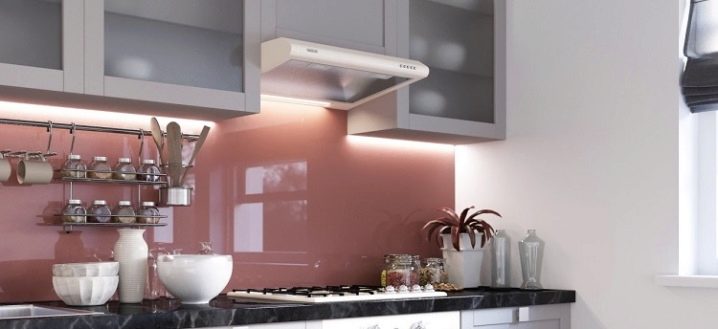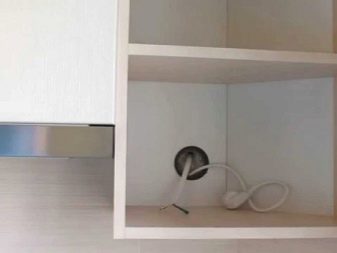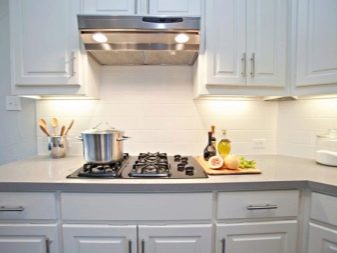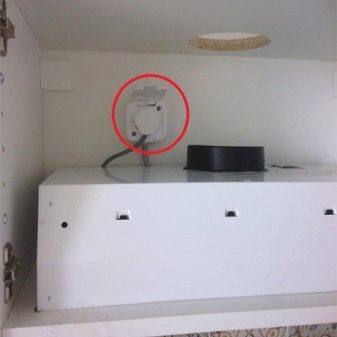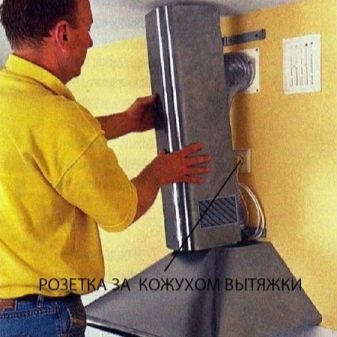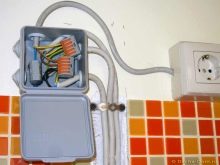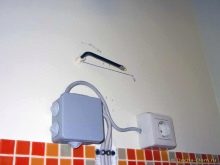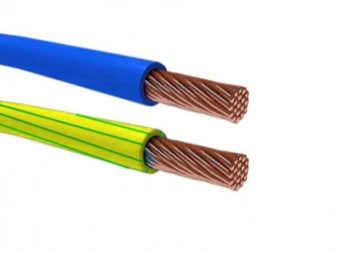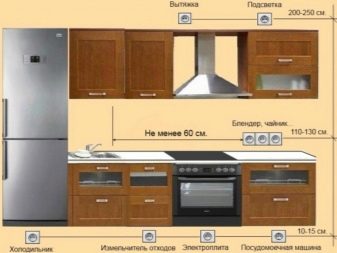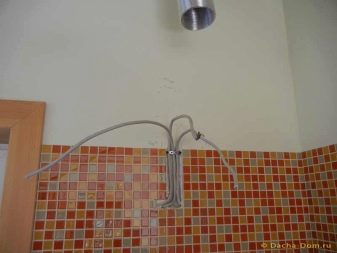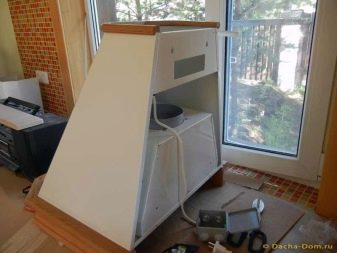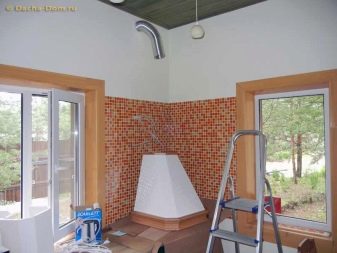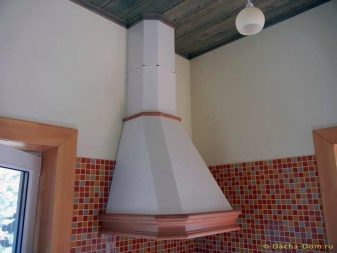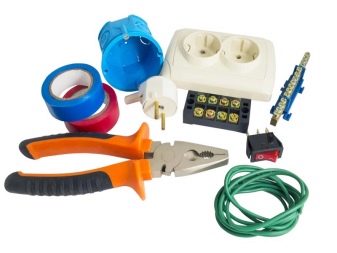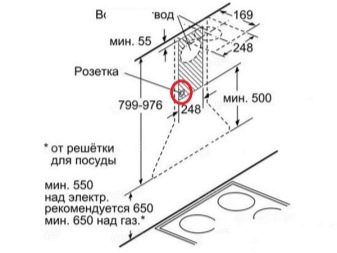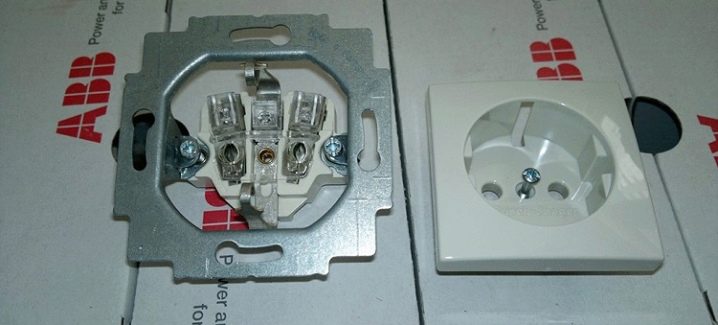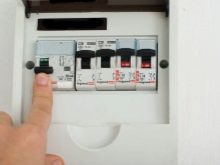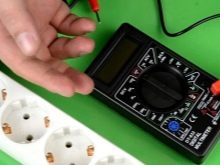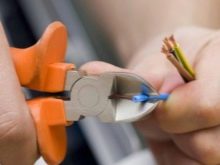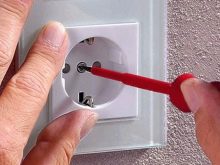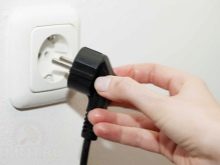Socket for exhaust: where to arrange and how to connect?
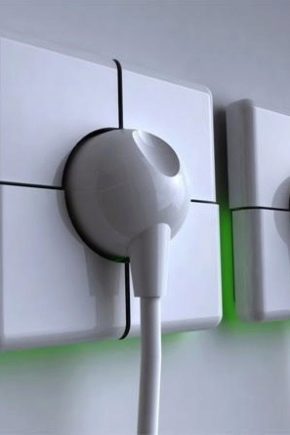
The device electrical wiring in the kitchen is not an easy task, because if it is illiterate to arrange electrical outlets, they can interfere with the installation of furniture and equipment, spoil the interior design and even become a threat to the safety of your home.
Special attention is required outlet for exhaust system. The location of the outlet for the kitchen hood must be considered at the stage of installation of electrical wiring. But you can do it after some time.
Special features
Nowadays, the choice of the consumer presents a variety of cleaning systems, fans or hoods.They differ in appearance, staffing, installation technique and connection. Suspended, wall-mounted, externally similar to a vertical umbrella and others - each exhaust hood requires a fail-safe power supply system. The location of the outlet is determined by the location of the main structure of the cleaning system.
Most of the modern exhaust systems are mounted in a wall cabinet above the hob (stove) or installed independently (without auxiliary elements). When mounted in a locker, the socket is installed inside its case, so the electrical connector is available for operation and there is no need for additional design. In systems of autonomous type, it is customary to place electrical cables and electrical sockets behind the hood of the exhaust system.
Choice of electrical sockets and cable
It is believed that suitable for the kitchen sockets that have a degree of protection against IP62 and more.
In addition to the degree of protection, you must pay attention to the following features.
- The material of manufacture. Too inexpensive products are made of poor quality plastic. Such material very quickly becomes unusable and melts more easily (which is important if the socket is located near the hob).
- Build quality. The socket must be assembled at the proper level, securely, without cracks and backlashes. Otherwise, fats, dust, and soot from the stove may accumulate inside or penetrate moisture.
- Input jacks for connecting plugs must be hidden by special protective panels that do not allow anything other than a plug (curtains) to enter the outlet. For the kitchen - this is an absolutely necessary function.
- Keramoblock for contact group. Ceramics can also be used in inexpensive samples, but it is significantly worse and softer than in more expensive models. Keramoblok visually should be intact, without obvious and unobtrusive cracks and chips.
- Petals for fixing should certainly be tough, not short. It depends on how firmly the socket will be held in the wall.
- Appearance. The “super design” of kitchen sockets is, of course, not the main criterion. If you are going to make a kitchen in a certain style, you should also pay attention to the appearance of the device, so that it fits into the overall design. Otherwise, the outlet can be removed in the closet.
Cable
The amount of electricity consumed by a kitchen exhaust system of 100-400 W in proportion to the load current does not exceed 2A, as a result, the cable for the electrical outlet can be connected with a section of 1-1.5 mm2.
This cable fully guarantees the reserve for the load, and also, in case of need, gives the possibility of connecting to the electricity of any other household appliance.
Installation of electrical sockets in compliance with the EMP
If the selection and acquisition of the outlet has already been made - you need to choose its location.
The main criteria for determining the place for the outlet under the exhaust system are as follows.
- It is necessary to determine precisely at what height and where the hood will hang or the extractor will already hang (perhaps the most basic rule). This is required so that when determining the location for a power outlet one can adhere to other principles and restrictions (distance to furniture items).
- The smallest distance from the point of electrical power to the furniture in the kitchen (countertop, cabinets, shelves) is 5 centimeters.
- The minimum distance from the source of electrical power to the hole of the ventilation shaft - 20 centimeters.
- It is recommended to install the socket not close to the casing of the exhaust system, but to indent approximately 30 centimeters. In this case, the point of power supply will not get the heat, reach the spray of fat and water from the hob (cooker).
- The connection with the grounding device must be arranged without fail, the current strength - from 15A.
- The total power of kitchen appliances should not be higher than 4 kW. In the case when the sum of electrical equipment in the kitchen already equals 4 kW or exceeds this value, it is necessary to draw your own line for the exhaust system in order to avoid overloading the electrical network while all appliances are functioning simultaneously.
- The socket should be freely available and not be blocked by appliances or furniture, at least heavy and cumbersome. First, you need to see the state of the power point. Secondly - in the event of its failure or electrical wiring, it will be necessary to move hardware and furniture aside (and in the kitchen it is often impossible to move a single piece of furniture).
Optimal place
As stated above There are several options for installing the outlet for the kitchen hood:
- for built-in modifications, the ideal location would be the inner box of the wall-mounted cabinet, in which the hood is integrated;
- for models of the suspended type - above the top panel, near the duct, then the power cord will be located outside the area of visibility;
- in the duct cover.
Such a characteristic as the installation height of the outlet under the hood is extremely significant. Professionals advise to install at a distance of 190 centimeters from the floor or 110 centimeters from the tabletop. Such a decision is fully explicable. The ideal height of the hood installation is at a distance of 65 centimeters above electric cookers or cooking surfaces and 75 centimeters above gas stoves or cooking surfaces. Approximately the height of the devices themselves is 20-30 centimeters. We fold the maximum size and we get 105 centimeters. For comfortable installation sockets leave 5 inches. As a result, its optimal location will be 110 centimeters from the top of the table top.
Despite the fact that the distance to the outlet of the exhaust system of 190 centimeters from the floor or 110 centimeters from the countertop is suitable for the majority of modern hoods and in kitchens of almost any architectural solutions, it is nevertheless necessary to understand that this is just a universal height, it is not always may be the most successful directly for your case. As a result, it is still necessary to have a clear plan of your kitchen with the selected electrical equipment at the electrical installation stage.Then you will be able to extremely accurately calculate the ideal place for the socket, while taking into account that, as a rule, the length of the electric cord at the kitchen hood is not more than 80 cm in length.
The method of placing the outlet inside the furniture makes it possible to hide the electrical wiring, which corresponds to today's method of arranging electrical points. The close proximity of electrical wiring and wood threatens to create fire hazardous situations.
For this reason, the sockets inside the furniture are mounted on a fireproof base of heat-resistant materials. The wiring is laid in a corrugated tube made of metal.
Electrical outlet connection
Connecting the outlet is carried out after All preliminary works have been completed:
- cable held;
- determined the place where to install;
- installation of underflow boxes (installation installation boxes);
- Purchased devices with the required IP protection level.
When all these actions are implemented, you can do the actual mounting.
Connection step by step looks like.
- Turn off the circuit breaker (machine).In spite of the fact that this work is not difficult, one should not overlook such an aspect as security.
- Check that the voltage is absent. Before removing the faceplate and touching the wires and contacts devoid of insulation, it is necessary to make sure that there is no voltage. You can do this with a simple voltage indicator, multimeter or tester.
- Strip the wire. Before connecting, you need to prepare the wire peeping out of the glass. If the electrical cable or wire is double insulated, then 15-20 centimeters of outer insulation is removed from it. After which it will become more pliable for connection. If paired wiring is made with single insulation, it is necessary to divide the wires between 5-10 centimeters.
- Connect a new outlet. First you need to connect the lead wire to the contacts. To do this, approximately 5-10 millimeters of insulation is removed from the conductive wires of the cable. The exposed part of the cable runs into the terminal and is firmly fixed with a screw. When tightening the screws do not have to put incredible effort, otherwise you can squeeze the cable.If the sockets are connected to earth, the earth conductor is connected to the proper terminal (earth terminal). This contact is connected to the grounding "mustache". Before connecting the grounding conductor of the cable, you need to make sure that just this core is the “earth”.
- Put the socket in the installation box. After connecting all the leads, the working part (conductive elements) of the socket should be placed in the installation box. It should be mounted smoothly, without skewing flush with the wall. The lead wires are carefully hidden in the installation box. After placing the outlet in the desired position, it must be securely fixed. To do this, it provides specialized clamping "legs" (or mounting antennae) with cogs. When screwing in the screws, the mounting brackets diverge, thereby securing the outlet. In the electrical outlets of the new generation fastening antennae are absent. They are fixed by screws, which are placed in the installation box.
- Screw the front panel. After mounting the conductive elements, you can fasten the front panel.
Remember that the installation of an electrical outlet for the hood in the kitchen should be done in accordance with the rules for installing electrical outlets. This will be a guarantee of safe operation of the device in the future.
For information on how to properly connect the hood in the kitchen, see the following video.
